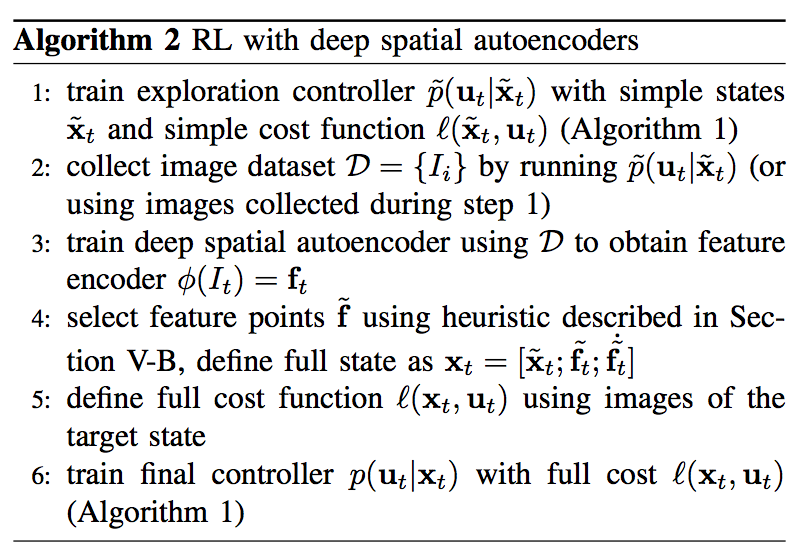Learning Visual Feature Spaces for Robotic Manipulation with Deep Spatial Autoencoders
Chelsea Finn, Xin Yu Tan, Yan Duan, Trevor Darrell, Sergey Levine, Pieter Abbeel
Abstract - Reinforcement learning provides a powerful and flexible framework for automated acquisition of robotic motion skills. However, applying reinforcement learning requires a sufficiently detailed representation of the state, including the configuration of task-relevant objects. We present an approach that automates state-space construction by learning a state representation directly from camera images. Our method uses a deep spatial autoencoder to acquire a set of feature points that describe the environment for the current task, such as the positions of objects, and then learns a motion skill with these feature points using an efficient reinforcement learning method based on local linear models. The resulting controller reacts continuously to the learned feature points, allowing the robot to dynamically manipulate objects in the world with closed-loop control. We demonstrate our method with a PR2 robot on tasks that include pushing a free-standing toy block, picking up a bag of rice using a spatula, and hanging a loop of rope on a hook at various positions. In each task, our method automatically learns to track task-relevant objects and manipulate their configuration with the robot's arm.
Erratum - Note, the original paper had an error in step 4 of Algorithm 2. The corrected algorithm is below:


Supplementary Appendix - Details of the experiments and baseline architectures are in this supplementary appendix.